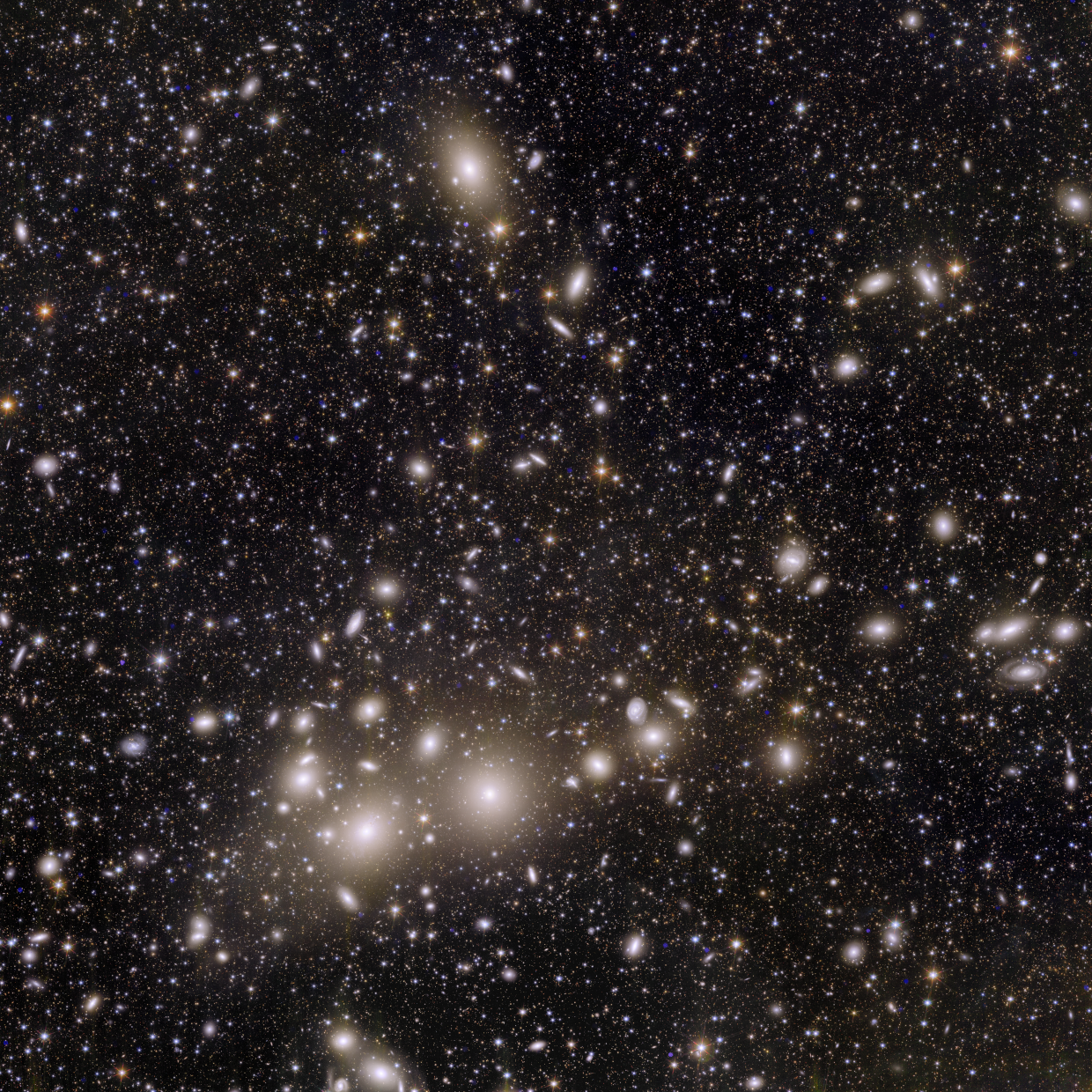Euclid's view of a cosmic swarm

The Euclid ERO image of the Perseus Cluster of galaxies contains over 1,000 individual galaxies which are all orbiting each other, much like a swarm of bees. This ERO image showcases the sharpness of detail achievable with Euclid, where structures within each individual galaxy can clearly be resolved. There are approximately 100,000 additional galaxies in this image which are all further away, or “behind” the Perseus Cluster. This image is very close to the type of observation that Euclid will perform during its main science operations. By measuring the slight distortions in the shapes of these distant galaxies we can determine the amount and distribution of dark matter and shed light on the nature of the mysterious dark energy.
Source: ESA/Euclid/Euclid Consortium/NASA, image processing by J.-C. Cuillandre (CEA Paris-Saclay), G. Anselmi
Are you interested in this topic?
At the University of Zurich, several researchers are actively studying galaxies and cosmology. See howProf. Dr. Joachim Stadel,Prof. Dr. Aurel Schneider, andProf. Dr. Julian Adamek at the Department of Astrophysics are contributing to the Euclid mission.
Are you a student that wants to learn more about this topic? Consider enrolling in these courses:
AST 241: Introduction to Astrophysics (Fall Semesters)
AST 245: Computational Astrophysics (Fall Semesters)
AST 293: Proseminar Cosmology (Fall Semesters)
PHY 473: Introduction to Astroparticle Physics and Cosmology (Fall Semesters)
AST 511: General Relativity (Fall Semesters)
AST 512: Theoretical Astrophysics (Fall Semesters)